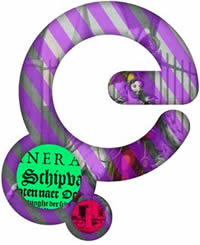Europeana and APENet
 I have just come back from the Europeana Tech conference, a 2 day event on various aspects of Europeana’s work and on related topics to do with data. The big theme was ‘open, open, open’, as well, of course, as the benefits of a European portal for cultural heritage. I was interested to hear about Europeana’s Linked Data output, but my understanding is that at present, we cannot effectively link to their data, because they don’t provide URIs for concepts. In other words, identifiers for names such as http://data.archiveshub.ac.uk/doc/agent/gb97/georgebernardshaw, so that we can say, for example, that our ‘George Bernard Shaw’ is the same as ‘George Bernard Shaw’ represented on Europeana.
I have just come back from the Europeana Tech conference, a 2 day event on various aspects of Europeana’s work and on related topics to do with data. The big theme was ‘open, open, open’, as well, of course, as the benefits of a European portal for cultural heritage. I was interested to hear about Europeana’s Linked Data output, but my understanding is that at present, we cannot effectively link to their data, because they don’t provide URIs for concepts. In other words, identifiers for names such as http://data.archiveshub.ac.uk/doc/agent/gb97/georgebernardshaw, so that we can say, for example, that our ‘George Bernard Shaw’ is the same as ‘George Bernard Shaw’ represented on Europeana.
I am starting to think about the Hub being part of APENet and Europeana. APENet is the archival aggregator for Europe. I have been in touch with them about the possibility of contributing our data, and if the Hub was to contribute, we could probably start from next year. Europeana only provide metadata for digital content, so we could only supply descriptions where the user can link to the digital content, but this may well be worth doing, as a means to promote the collections of any Hub contributors who do link to digital materials.
If you are a contributor, or potential contributor, we would like to know what you think…. we have a quick question for you at http://polldaddy.com/poll/5565396/. It simply asks if you think its a good idea to be part of these European initiatives. We’d love to get your views, and you only have to leave your name and a comment if you want to.
Flickr: an easy way to provide images online
You will be aware that contributors can now add images to descriptions and links to digital content of all kinds. The idea is that the digital content then forms an integral whole with the metadata, and it is also interoperable with other systems.
I’ve just seen an announcement by the University of Northampton, who have recently added materials to Flickr . I know that many contributors struggle to get server space to put their digital content online, so this is one possible option, and of course it does reach a huge number of people this way. There may be risks associated with the persistence of the URIs for the images, but then that is the case wherever you put them.
On the Hub we now have a number of images and links to content, for example: http://archiveshub.ac.uk/data/gb1089ukc-joh, http://archiveshub.ac.uk/data/gb1089ukc-bigwood, http://archiveshub.ac.uk/data/gb1089ukc-wea, http://archiveshub.ac.uk/data/gb141boda?page=7#boda.03.03.02.
Ideally, contributors would supply digital content at item level, so the metadata is directly about the image/digital content, but it is fine to provide it at any level that is appropriate. The EAD Editor makes adding links easy (http://archiveshub.ac.uk/dao/). If you aren’t sure what to do, please do email us.
Preferred Citation
We never had the field for the preferred citation in our old template for the creation of EAD, and it has not been in the EAD Editor up till now. We were prompted to think about this after seeing the results of a survey on the use of EAD fields presented at the Society of American Archivists conference. Around 80% of archive institutions do use it. We think it’s important to advise people how to cite the archive, so we are planning to provide this in the Editor and may be able to carry out global edits to add this to contributors’ data.
List of Contributors
Our list of contributors within the main search page has now been revised, and we hope it looks substantially more sensible, and that it is better for researchers. This process really reminded us how hard it is to come up with one order for institutions that works for everyone! We are currently working on a regional search, something that will act as an alternative way to limit searching. We hope to introduce this next year.
And finally…A very engaging Linked Data interface
This interface demonstration by Tim Sherratt shows how something driven by Linked Data can really be very effective. It also uses some of the Archives Hub vocabulary from our own Linked Data work, which is a nice indication of how people have taken notice of what we have been doing. There is a great blog post about it by Pete Johnston, Storytelling, archives and Linked Data. I agree with Pete that this sort of work is so exciting, and really shows the potential of the Linked Data Web for enabling individual and collective storytelling…something we, as archivists, really must be a part of.
